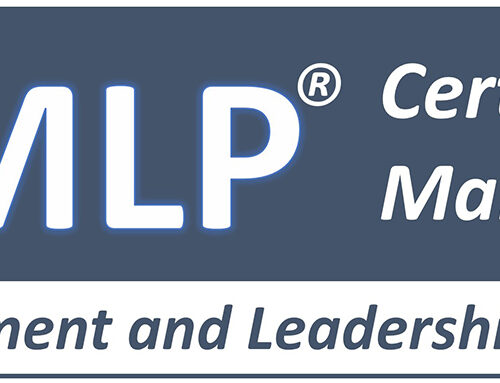This post was first published in my “Driving IT Productivity” column on CIO.com and has been updated from its original form.
Every department within IT is part of an overall technical ecosystem that is connected to all other departments in some way. For example, Business Analysis provides functional specifications to the programmers. Trainers provide classes which help programmers learn their craft. Database Administrators design database schemas for use by the programmers and oversee the storage and movement of data in cooperation with Enterprise Architects and Production Operations. At a macro level, Data Security protects the computing environment, Data Communications maintains the computing backbone and the Help Desk keep all IT and user devices up and running.
If any of these departments fall short in the execution of their responsibilities, then IT and the company it service could fail. As a result of this interrelationship, productivity initiatives in any one department can positively affect other areas of IT and the company overall. This concept is called “Productivity Linking”. Understanding these connections allows you to strategically prioritize your productivity initiatives, based on what is best for IT as a whole. The technique used to document and analyze these connections is called “Productivity Mapping”.
The Productivity Mapping process begins by defining your primary goal, which, generally speaking, will loosely fall into three fundamental categories.
- General Productivity Enhancement
- Specific Department Productivity Enhancement
- Specific Process Productivity Enhancement
General Productivity Enhancement is the goal of boosting the organization’s overall efficiency. This type of productivity can be attained using the follow three steps:
1. Identify and document departmental dependencies
Establishing department dependencies back to their original source allows you to maximize the benefits of your productivity investment by starting at the root sources of your department and working your way forward. At a very high level, based on your team’s strengths, challenges and goals, your organization’s Product Map may look like

Figure 1
Given the above Productivity Map in Figure 1, logic would dictate that you first enhance the efficiency of Business Analysis, Help Desk and HR/Recruiting, because enhanced efficiencies in these areas will provide value to the departments they serve, namely Database Design/Admin, Software Development and Testing. This may seem counter-intuitive to think that the first step to improving Production Control efficiency is to enhance the Help Desk, but if technical issues on the programmer and database design desktops hurt software quality, then the software entering the production will be flawed and/or inefficient, thus causing technical issues, which in turn reducing production efficiency.
2. Begin your productivity initiatives at the root source departments
When performing this type of analysis, you will most likely see that the internal service groups, such as Help Desk, provide support to all parts of the organization. As a result, enhancing the productivity of these three areas first, allows them to better serve their internal clients throughout the organization. This enhanced productivity has three potential uses:
- Reducing the cost of internal overhead functions, thus providing time, money and resources for other non-overhead based activities
- Reinvesting the productivity gains within the overhead functions to enhance their ability to provide service throughout the company
- Reinvesting the harvested time and resources in other productivity initiatives and use the harvested money to enhance profitability
Move step-by-step through your Productivity Map to all parts of the company
With your root level department productivity projects completed, move forward department-by-department, in the order identified and illustrated in your Productivity Enhancement Map, to enhance the efficiency of other departments further down the productivity chain.
Specific Department Productivity Enhancement is the goal of enhancing the efficiency of a specific department. In this case, the Productivity Map is department centric. That is to say, you map its
- Organizational dependencies
- Incoming process dependencies
- Internal department processes
- Required output
The high level Productivity Map illustrating this concept is shown below.

The steps related to department level productivity enhancements are:
- Build your department’s Productivity Map
- Define how your department’s productivity can be enhanced via the groups providing your department workflow and/or support in some manner
- Meet with the managers of these supporting departments with the goal of enhancing and/or modifying the service your group is being provided
- Analyze the services you are providing to others and internal services you perform for internal consumption
- Prioritize your internal department processes based on the analysis performed within step #4
Specific Process Productivity Enhancement is the goal of enhancing a specific company or department-specific process. Using the Software Testing area as an example, you may have the following process:
- Business Analysis designs the functional specification
- Software Development writes software as specified by the Business Analysts
- Software Testing assures that the created software meets the functional specification
The Productivity Map for this scenario is shown below.

The steps for enhancing a single process can be performed using any number of standard process reengineering techniques that your organization may already be deploying. At a high level, I would suggest the following:
- Build a process Productivity Map
- When analyzing the map, if there are any clear bottlenecks in the process, correct those first
- If you are simply trying to enhance the process’s overall output and/or efficiency, consider the following:
- If you start at its root activity and then move forward, based on the maximum capacity of downstream processes, you may be creating downstream bottlenecks
- If you start at the last step and move backward through the process, it may be a long time before you reap the benefits of enhanced efficiencies
- The direction you go (start-to-finish or end-to-start) should be based on the type of process being enhanced and the ramifications related to feeding more volume into the pipeline that can’t be promptly served.
As additional food for thought, once your IT group has mastered the Productivity Linking and Mapping process, you can use this knowledge to enhance the productivity outside of IT, throughout the organization it serves.





